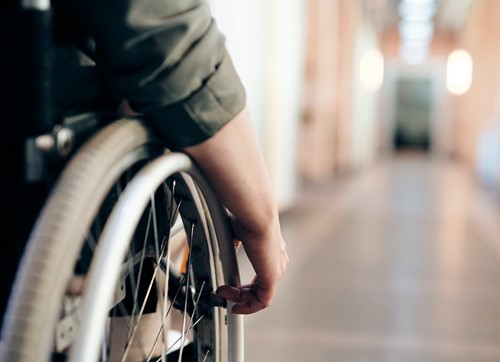Email: [email protected]

Photo by Marcus Aurelius via Pexels
Approximately 61 million adult Americans have some form of a disability, according to the CDC. That figure equals one out of every four of our community members. Add the fact that the U.S. Census indicates the country is headed for a “gray tsunami” with upwards of 73 million people entering retirement age. It stands to reason accessible living spaces will be in increased demand.
That’s why new construction home builders would be wise to consider modifying bathrooms to ensure accessibility for aging community members and those with disabilities. Whether prospective homeowners require these enhancements now or in the future, wheelchair accessible showers are also beautifully spacious. These are top things to consider when designing a wheelchair accessible shower.
Spaciousness and room to move about freely are top considerations when creating a wheelchair-friendly bathroom. Blueprints for the new construction home may consider making this bathroom the square-footage equivalent of a bedroom or home office. This facet tends to make such a bathroom luxurious. Along with accessories such as seats and specialized gadgets, these are ways to improve shower accessibility.
Some fine details to consider in an accessible shower layout include installing an anti-scald mixing valve that keeps temperature spikes in check. Maximum temperatures for this style typically top-out at 120 degrees. The layout should also position appropriate space to house hair care and bathing products, as well as towels and washcloths. This type of shower differs from standard bathrooms that place things like towel hooks outside the space. These are typically placed away from the showerhead and floor space that drains water.
Overhead lights and heat lamps on timers also add value and make showering more relaxing. It’s also essential to keep in mind that loose plastic shower curtains tend to create a trip and fall hazard. If your accessible shower requires a divider, plexiglass doors and panels offer a safe solution.
In terms of accessible showers in new construction, these spacious designs are not strictly for aging Americans and people with mobility limitations. Homes that include spacious and beautiful showers and bathrooms increase values and are highly sought after resale properties.

Georgina was born and raised in Paris, France. She studied Mathematics and Biology at the University of Paris. She settled in Marin County where she and her husband raised their two children. She was on tour with Cirque du Soleil, managing and chaperoning her young daughter who was one of the show's featured performers. During this time, they worked and traveled throughout Canada and the USA. Georgina appreciates the beauty of the Bay Area and Sonoma. She especially enjoys the nice weather, diversity, and culture. She became a tax preparer and an Enrolled Agent. She decided to become a Realtor® and is pleased to join Keller Williams Realty. For fun, she enjoys traveling and playing the Piano.
Realtor®
DRE #02104684
415.342.6794